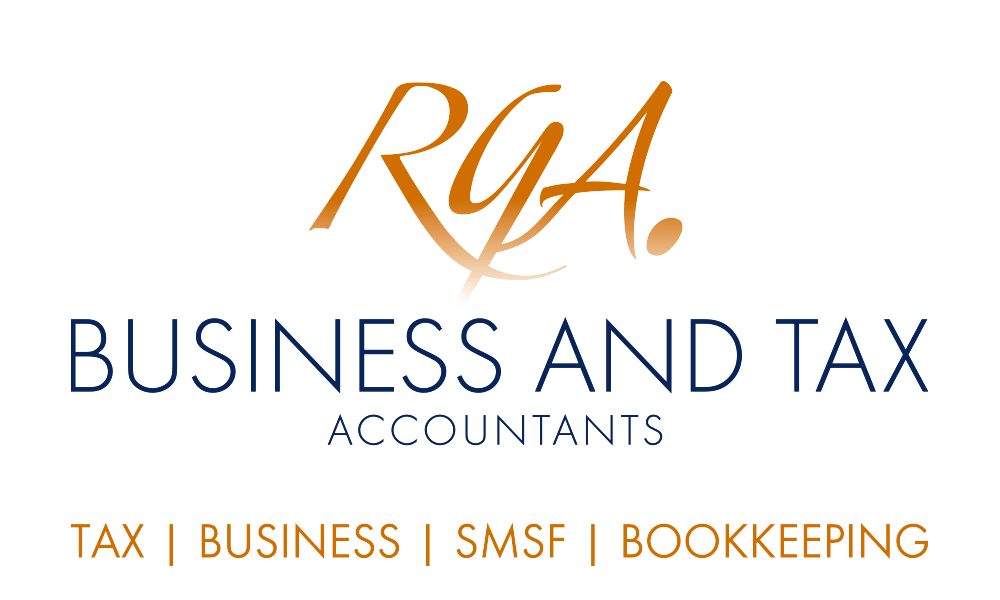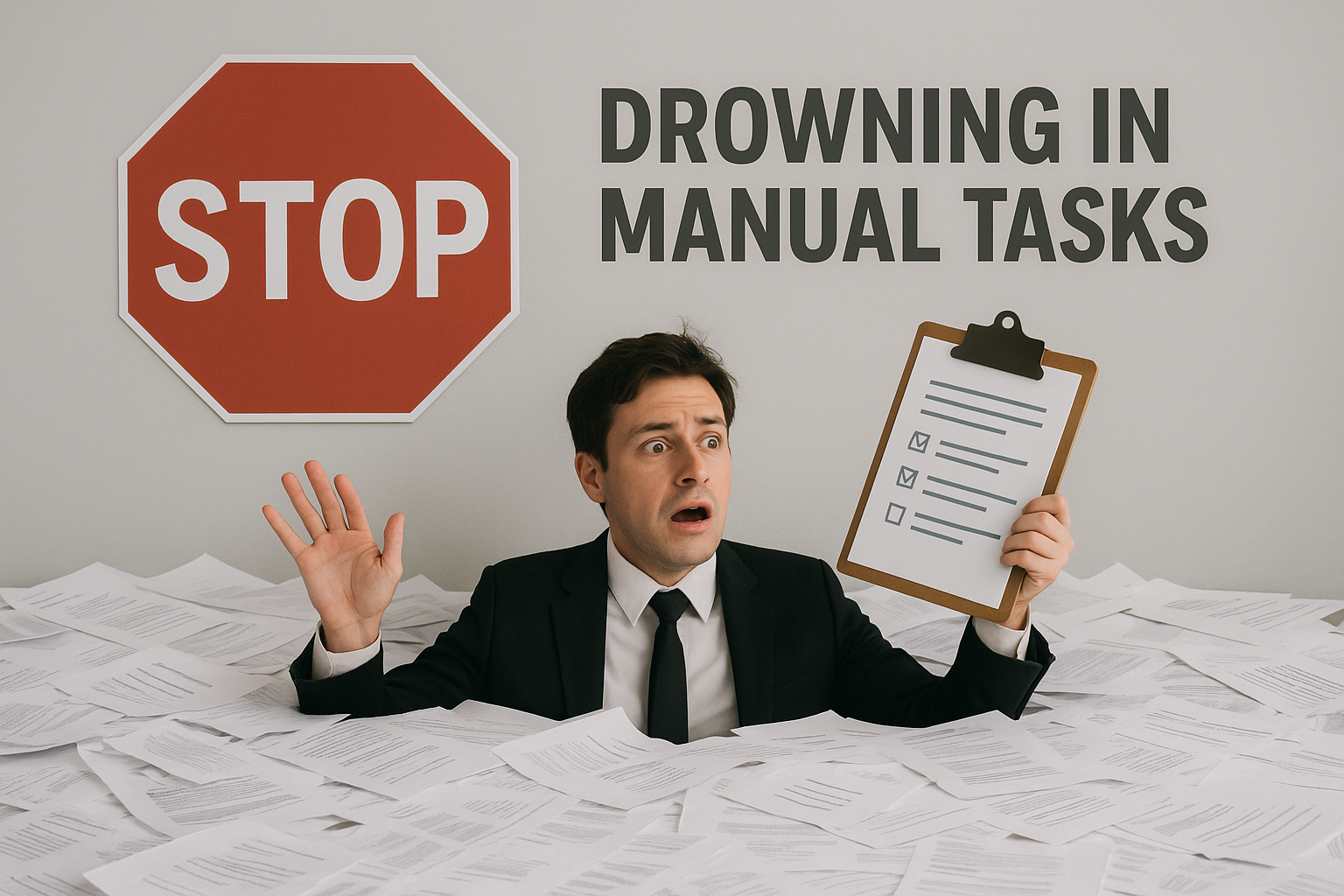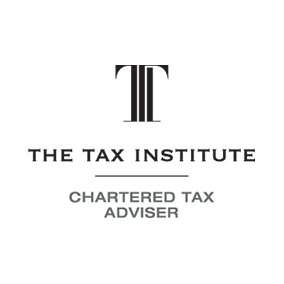August 2025 Tax Newsletter

As we move into the 2025/2026 financial year there are some key changes in tax, superannuation and compliance that are set to impact on a range of individuals and business owners. This edition of our newsletter brings together the most relevant updates to help you stay compliant, minimise your tax exposure and make informed financial decisions.
In this issue:
- Interest expense deductions: we break down what counts and what doesn’t
- Luxury car tax and depreciation traps: the tax rules are more complex than they seem
- Superannuation guarantee increases to 12%: ensure your payroll systems and employment contracts are updated to reflect the new rate and avoid costly penalties
- Updated superannuation and tax thresholds: key updates to contribution caps, CGT contribution limits, and safe harbour interest rates
- Super contributions: get the timing and paperwork right.
- RBA holds interest rates steady: we unpack what the Reserve Bank’s July decision
- Paid parental leave changes have now commenced
- ASIC warning about pushy sales tactics urging quick super switches
- ATO warns of common Division 7A errors
- Taxpayers who need to lodge a TPAR
- Hidden Trap: Why Some Families Face Surprise Tax Bills in 2025
- Tax Time 2025: What You Need to Know – ATO Updates That Could Affect You
Interest deductions: risks and opportunities
This tax season, we’ve seen a surge in questions about whether interest on a loan can be claimed as a tax deduction. It’s a great question as the way interest expenses are treated can significantly affect your overall tax position. However, the rules aren’t always straightforward. Here’s what you need to know.
The purpose of the loan
The most important thing when looking at the tax treatment of interest expenses is to identify what the borrowed money has been used for. That is, why did you borrow the money?
For interest expenses to be deductible you generally need to show that the borrowed funds have been used for business or other income producing purposes. The security used for the loan isn’t relevant in determining the tax treatment.
Let’s take a very simple scenario where Harry borrows money to buy a new private residence. The loan is secured against an existing rental property. As the borrowed money is used to acquire a private asset the interest won’t be deductible, even though the loan is secured against an income producing asset.
Redraw v offset accounts
While the economic impact of these arrangements might seem somewhat similar, they are treated very differently under the tax system. This is an area to be especially careful with.
If you have an existing loan account arrangement, you’ve paid off some of the loan balance and you then use a redraw facility to access those funds again, this is treated as a new borrowing. We then follow the golden rule to determine the tax treatment. That is, what have the redrawn funds been used for?
An offset account is different because money sitting in an offset account is basically treated much like your personal savings. If you withdraw money from an offset account you aren’t borrowing money, even if this leads to a higher interest charge on a linked loan account. As a result, you need to look back at what the original loan was used for.
Let’s compare two scenarios that might seem similar from an economic perspective:
Example 1: Lara’s redraw facility
Lara borrowed some money five years ago to acquire her main residence. She has made some additional repayments against the loan balance. Lara redraws some of the funds and uses them to acquire some listed shares. Lara now has a mixed purpose loan. Part of the loan balance relates to the main residence and the interest accruing on this portion of the loan isn’t deductible. However, interest accruing on the redrawn amount should typically be deductible where the funds have been used to acquire income producing investments.
Example 2: Peter’s offset account
Peter also borrowed money to acquire a main residence. Rather than making additional repayments against the loan balance, Peter has deposited the funds into an offset account, which reduces the interest accruing on the home loan. Peter subsequently withdraws some of the money from the offset account to acquire listed shares. This increases the amount of interest accruing on the home loan. However, Peter can’t claim any of the interest as a deduction because the loan was used solely to acquire a private residence. Peter simply used his own savings to acquire the shares.
Parking borrowed money in an offset account
We have seen an increase in clients establishing a loan facility with the intention of using the funds for business or investment purposes in the near future. Sometimes clients will withdraw funds from the facility and then leave them sitting in an existing offset account while waiting to acquire an income producing asset. This can cause problems when it comes to claiming interest deductions.
First, even if the offset account is linked to a loan account that has been used for income producing purposes, this won’t normally be sufficient to enable interest expenses incurred on the new loan from being deductible while the funds are sitting in the offset account.
For example, let’s say Duncan has an existing rental property loan which has an offset account attached to it. Duncan takes out a new loan, expecting to use the funds to acquire some shares. While waiting to purchase the shares, he deposits the funds into the offset account, which reduces the interest accruing on the rental property loan. It is unlikely that Duncan will be able to claim a deduction for interest accruing on the new loan because the borrowed funds are not being used to produce income, they are simply being applied to reduce some interest expenses on a different loan.
To make things worse, there is also a risk that parking the funds in an offset account for a period of time might taint the interest on the new loan account into the future, even if money is subsequently withdrawn from the offset account and used to acquire an income producing asset.
For example, even if Duncan subsequently withdraws the funds from the offset account to acquire some listed shares, there is a risk that the ATO won’t allow interest accruing on the second loan from being deductible. The risk would be higher if there were already funds in the offset account when the borrowed funds were deposited into that account or if Duncan had deposited any other funds into the account before the withdrawal was made. This is because we now can’t really trace through and determine the ultimate source of the funds that have been used to acquire the shares.
To do
It’s worth reaching out to us before entering into any new loan arrangements. In this area, mistakes are often difficult to fix after the fact, which can lead to poor tax outcomes. That’s why getting advice from a tax professional before committing to a loan is essential. We can work alongside you and your financial adviser to ensure your loan is structured in a way that makes financial sense and protects your tax position.
Luxury cars: the impact of the modified tax rules
With the purchasing of luxury vehicles on the rise it’s important to be aware of some specific features of the tax system that can impact on the real cost of purchase. Often the tax rules provide taxpayers with a worse tax outcome if the car will be used for business or other income producing purposes compared with a non-luxury car, but this depends on the situation.
Let’s take a look at the key features of the tax system dealing with luxury cars and the practical impact they can have on your tax position.
Depreciation deductions and GST credits
Normally when someone purchases a motor vehicle which will be used in their business or other income producing activities there will be an opportunity to claim depreciation deductions over the effective life of the vehicle. Rather than claiming an immediate deduction for the cost of the vehicle, you will typically be claiming a deduction for the cost of the vehicle gradually over a number of years.
Likewise, a taxpayer who is registered for GST might be able to claim back GST credits on the cost of purchasing a motor vehicle that will be used in their business activities.
However, when you are dealing with a luxury car the tax rules will sometimes limit your ability to claim depreciation deductions and GST credits, impacting on the after-tax cost of acquiring the car.
How does it work?
Each year the ATO publishes a luxury car limit which is $69,674 for the 2025-26 income year. If the total cost of the car exceeds this limit, then this can impact the GST credits or depreciation deductions that can be claimed.
Let’s assume that Alice buys a new car for $88,000 (including GST) in July 2025. To keep things simple, let’s say Alice uses the car solely in her business activities and is registered for GST.
The first issue for Alice is that rather than claiming GST credits of $8,000, her GST credit claim will be limited to $6,334 (ie, 11th x $69,674). We then subtract the GST credits that can be claimed from the total cost, leaving $81,666. As this still exceeds the luxury car limit, Alice’s depreciation deductions will be capped as well. While she actually spent $89,000 on the car, she can only claim depreciation deductions based on a deemed cost of $69,674. The end result is that Alice has missed out on some GST credits and depreciation deductions because she bought a luxury car.
Exceptions to the rules
There are some important exceptions to these rules.
The rules only apply to vehicles which are classified as ‘cars’ under the tax system. That is, the car limit doesn’t apply if the vehicle is designed to carry a load of at least one tonne or it is designed to carry at least 9 passengers.
The rules only apply if the vehicle was designed mainly for carrying passengers. The way we determine this depends on the nature of the vehicle and whether we are dealing with a dual cab ute or not.
For example, let’s assume Steve buys a ute which is designed to carry a load of at least one tonne. This isn’t classified as a car for tax purposes so Steve won’t miss out on GST credits or depreciation deductions.
However, let’s assume Jenny has bought a dual cab ute which is designed to carry a load of less than one tonne and fewer than 9 passengers. This is classified as a car and the luxury car limit will apply unless we can show that it wasn’t designed mainly to carry passengers. As we are dealing with a dual cab ute, we multiply the vehicle’s designed seating capacity (including the driver's) by 68kg. If the total passenger weight determined using this formula doesn’t exceed the remaining 'load' capacity, we should be able to argue that the ute wasn’t designed mainly for the principal purpose of carrying passengers, which means that Jenny should be able to claim depreciation deductions based on the full cost of the vehicle.
The approach would be different if we were dealing with something other than a dual cab ute, such as a four-wheel drive vehicle.
Luxury car lease arrangements
Normally when someone enters into a lease arrangement for a car and they use the car in their business or employment duties there’s an opportunity to claim deductions for the lease payments, adjusted for any private usage.
However, if the value of the car exceeds the luxury car limit then the tax rules apply differently. Basically, what happens is that the taxpayer is deemed to have purchased the car using borrowed money. Rather than claiming a deduction for the actual lease payments, instead we will be claiming deductions for notional interest charges and depreciation, subject to the luxury car limit referred to above.
Luxury car tax
Cars with a luxury car tax (LCT) value which is over the LCT threshold for that year are subject to LCT, which is calculated as 33% of the amount above the LCT threshold.
The LCT thresholds for the 2025-26 income year are:
- $91,387 for fuel-efficient vehicles
- $80,567 for all other vehicles that fall within the scope of the LCT rules
From 1 July 2025 the definition of a fuel-efficient vehicle has changed, meaning that a car will only qualify for the higher LCT threshold if it has a fuel consumption that does not exceed 3.5 litres per 100km (this was 7 litres per 100km before 1 July 2025).
Buying a car or other motor vehicle can be a complex process and there will be a range of factors to consider. If you need assistance with the tax side of things please let us know before you jump in and sign any agreements.
Superannuation rates and thresholds updates
Super guarantee rate now 12%: what it means for employers
From 1 July 2025, the superannuation guarantee (SG) rate officially rose to 12% of ordinary time earnings (OTE). This is the final step in the gradual increase legislated under previous reforms.
What’s changed?
Old rate: 11.5% (up to 30 June 2025)
New rate: 12% (from 1 July 2025)
This increase affects cash flow, payroll accruals and employment contracts, especially where total remuneration includes superannuation.
Employer checklist
- Update payroll software: ensure systems are calculating 12% SG correctly from 1 July 2025 pay runs
- Review employment agreements: if contracts are set to inclusive of super, the take-home pay of employees may reduce unless renegotiated or the employer decides to bear the cost of the increased SG rate
- Budget for higher super contributions: consider possible cash flow impacts
- Remember that significant penalties can be imposed for late or incorrect SG payments, including loss of deductions, interest and other administration charges.
Personal superannuation contributions
Non Concessional Contributions (not tax deductible)
The annual non-concessional contribution (NCC) cap is set at four times the concessional contribution cap meaning it will also remain at $120,000.
Although the annual NCC cap is unchanged, you can now make NCCs if your total super balance is less than $2 million on 30 June 2025 (as long as you haven’t passed the age 75 deadline and any previous bring-forward rules are taken into account). This higher limit is because the general transfer balance cap has increased to $2 million.
From 30 June 2025, the amount you can contribute to your superannuation without exceeding the non-concessional contributions (NCC) cap depends on your total super balance:
- If your total super is less than $1.76 million:
You can contribute up to $360,000 over three years by using the bring-forward rule. - Between $1.76 million and $1.88 million:
Your cap is $240,000, with a two-year bring-forward period. - Between $1.88 million and $2 million:
The cap is reduced to $120,000, with no bring-forward option available. - $2 million and above:
No further non-concessional contributions are permitted.
These thresholds help guide members on maximising contributions while remaining compliant with superannuation rules.
Personal deductible contributions
The annual concessional contribution cap will remain at $30,000 for the 2025/2026 financial year.
A superannuation fund member may be able to claim a deduction for personal contributions made to their super fund with personal after-tax funds. A member will normally be eligible to claim a deduction if:
- The member makes an after-tax contribution to their superannuation fund in the relevant financial year
- They are aged under 67 or 67 to 74 and meet a work test or work test exemption
- They have provided the superannuation fund with a valid notice of intent to claim
- The super fund has provided the member with acknowledgement of the notice of intent to claim
If your total superannuation balance is below $500,000 at the previous 30 June, you may be eligible to make “catch-up” concessional contributions. This means you can carry forward any unused portion of your concessional contributions cap from the past five financial years, allowing you to boost your super if you haven’t maximised contributions in previous years. This is a valuable opportunity for those looking to grow their retirement savings.
Notice of intent to claim
If the member is eligible and would like to claim a deduction, then they must notify their super fund that they intend to claim a deduction. The notice must be valid and in the approved form – Notice of Intent to Claim or vary a deduction for personal super contributions (NAT 71121).
The tax legislation provides a notice of intent to claim will be valid if:
• The individual is still a member of the fund
• The fund still holds the contribution
• It does not include all or part of an amount covered by a previous notice
• The fund has not started paying a super income stream using any of the contribution
• The contributions in the notice of intent have not been released from the fund that the individual has given notice to under the First Home Super Saver Scheme (FHSSS)
• The contributions in the notice of intent don't include FHSSS amounts that have been recontributed to the fund.
What you need to consider
The member must provide the notice of intent to claim to the fund by the earlier of:
• The day the individual lodges their income tax return for the relevant financial year; or
• 30 June of the following financial year in which the individual made the contribution.
However, if a super fund member provides a notice of intent after they have rolled over their entire super interest to another fund, withdrawn the entire super interest (paid it out of super as a lump sum), or commenced a pension with any part of the contribution, the notice will not be valid.
This means the individual will not be able to claim a deduction for the personal contributions made before the rollover or withdrawal.
Key Superannuation & Tax Thresholds: What’s Changing in 2025/2026
The Australian Government has announced updates to several superannuation and tax thresholds for the 2025/2026 financial year:
- General transfer balance cap will increase from $1.9 million to $2 million.
- Defined benefit income cap will rise from $118,750 to $125,000.
- CGT Lifetime Cap goes up to $1,865,000 from $1,780,000.
- Untaxed plan cap (Lifetime) also increases to $1,865,000 from $1,780,000.
- Superannuation Guarantee Maximum Contributions Base adjusts to $62,500 per quarter (down from $65,070).
- Safe Harbour rates for related party LRBA's decrease to 8.95% (from 9.35%).
Thresholds Remaining Unchanged
The following contribution and income caps remain the same for 2025/2026:
- Concessional contribution cap: $30,000
- Non-concessional contribution cap: $120,000
- Maximum bring forward non-concessional cap (over 3 years): $360,000
- Division 293 annual income threshold: $250,000
What this means for you:
These changes impact how much you can contribute to superannuation, tax planning, and retirement strategies. Be sure to review your arrangements to make the most of these new limits from July 2025. We can refer you to an independent financial advisor for assistance with your planning needs.
RBA Holds Rates at 3.85%: what this means for your business strategy
In a move that surprised many commentators, the Reserve Bank of Australia (RBA) held the cash rate steady at 3.85% in July. A show of caution over action, amid mixed economic signals. Despite headline inflation easing within the RBA’s target band, concerns over economic fragility and employment softness prompted the central bank to delay a widely expected cut.
Why the RBA waited
• The Board is awaiting June quarter CPI data to assess whether inflation stability is sustainable
• Australia’s labour market is showing early signs of softening, and business confidence has dropped slightly
• Consumer spending remains muted, especially among mortgage holding households, which has led some economists to call for a rate reduction to spur activity.
Potential impacts
The interest rate hold means ongoing pressure on loan repayments and cash flow, particularly for those with variable debt or finance leases. Businesses relying on consumer discretionary spending may continue to feel the squeeze. The hold does however give business owners time to prepare. Analysts expect a possible cut in late Q3 or early Q4 if data trends continue potentially providing breathing room ahead of the holiday period. Given where things are at it’s a good time to review your debt exposure, optimise cash flow and consider refinancing options.
Paid parental leave changes have now commenced
As from 1 July 2025, the amount of Paid Parental Leave available to families increased to 24 weeks, and the amount of Paid Parental Leave that parents can take off at the same time has also increased from two weeks to four weeks.
Superannuation will now also be paid on Government Paid Parental Leave from 1 July 2025, at the new super guarantee rate of 12%, paid as a contribution to their nominated superannuation fund.
Parents will also benefit from an increase in the weekly payment rate of Paid Parental Leave, increasing from $915.80 to $948.10 (in line with the increase to the National Minimum wage). This means a total increase of $775.20 over the 24-week entitlement.
ASIC warning about pushy sales tactics urging quick super switches
ASIC is warning Australians to be on 'red alert' for high-pressure sales tactics, click bait advertising and promises of unrealistic returns which encourage people to switch superannuation into risky investments.
The warning comes amid increasing concerns from ASIC that people are being enticed to invest their retirement savings in complex and risky schemes.
ASIC Deputy Chair Sarah Court said the start of a new financial year was often the trigger for people to check their super fund's performance, and urged consumers to be extra cautious.
"When it comes to sales calls about super switching, there are some big red flags people should be alert to — being asked to make a quick decision is one of the most obvious. Remember, a good deal won't vanish overnight."
She said that these calls "don't have the hallmarks of a typical scam. The caller will seemingly have your best interests at heart, and they say they want to help you find a better super product or locate lost super for free."
Consumers should always ask questions about salespeople's connections to funds, particularly in circumstances where a particular fund appears in the pitch, as there may be a commission arrangement.
"If you are unsure or are feeling pressured, just hang up."
ATO warns of common Division 7A errors
The ATO reminds shareholders of private companies that understanding how Division 7A of the tax legislation applies is crucial to avoiding costly tax consequences when accessing the company's money or other benefits.
When Division 7A applies, the recipient of a payment, loan or other benefit can be deemed to have been paid an unfranked dividend that will be included in their assessable income.
While Division 7A can be complex, most errors the ATO sees that result in its application are simple in nature, including:
· shareholders not recognising that a company's money is not their money, and they cannot access it for personal use without tax consequences;
· loans being made without complying loan agreements; and
· applying the wrong benchmark interest rate when calculating Division 7A loan repayments.
These errors are often the result of common myths about Division 7A and how it works.
To support taxpayers' understanding of their tax obligations when managing private company money, the ATO has launched new content: 'Division 7A Myths debunked' on its website.
This page debunks common myths about Division 7A, breaking them into topics such as 'business structure', 'record keeping', and 'payments to other entities'.
Taxpayers who need to submit a TPAR (Taxable Payments Annual Report)
If you’ve hired contractors to do certain types of work for your business, you might need to lodge a Taxable Payments Annual Report (TPAR) by 28 August. This applies if you’ve paid contractors for services like:
· building and construction
· cleaning
· courier or road freight
· IT services
· security, investigation, or surveillance
Since TPARs must be lodged online, it’s a good idea to check now whether you’re required to submit one—especially if you’ve used any of the relevant contractor services this year.
If the ATO is expecting a TPAR from you but you’re not required to lodge, you can submit a TPAR Non-Lodgment Advice form by 28 August instead. This form is also handy if you no longer pay contractors and want to let the ATO know you won’t need to lodge TPARs in the future (just keep in mind you’ll need to start lodging again if your situation changes).
Important: The ATO will no longer accept paper TPARs after 28 August 2025, so everything must be done online.Need help lodging or figuring out whether you need to lodge? Get in touch with our office—we’re here to help. Please reach out to us at reception@rgaaccounting.com.au.
Hidden Trap: Why Some Families Face Surprise Tax Bills in 2025
Some people might be hit with surprise tax bills this year thanks to the Medicare Levy Surcharge (MLS), as the ATO ramps up its use of advanced data-matching technology. It’s catching out individuals and families who thought their private health cover was up to scratch—only to find out it didn’t quite meet all the fine print.
What Is the Medicare Levy Surcharge?
The MLS is designed to encourage higher-income earners to take out private hospital cover. For the 2025–26 year, the surcharge applies if your income is over:
· $101,001 for singles
· $202,001 for families (plus $1,500 for each dependent child after the first)
The penalty can be up to 1.5% of your income, potentially costing thousands in additional tax.
What’s Catching People Out?
Families are being caught when even one member — often a dependent child — isn’t covered under a compliant private health policy. For example, if each adult has singles cover but the children are only on Medicare, the whole family may be hit with the surcharge.
Common triggers include:
· Getting married or entering a de facto relationship
· Having children
· Failing to upgrade from singles to family cover
· Health fund reporting errors or delays
In some cases, the ATO is issuing amended assessments for previous years, leaving taxpayers with unexpected backdated debts of $2,000 or more.
What You Should Do
To avoid getting caught out:
· Check your health insurance: Was every family member covered for the full financial year?
· Review any changes in relationship or family status during the year.
· Contact your insurer to confirm your policy details are correct.
· Seek advice if you’ve received a notice from the ATO or your circumstances have changed.
The ATO now has the tools to identify mismatches quickly, so staying informed and proactive can help avoid costly surprises.
Tax Time 2025: What You Need to Know – ATO Updates That Could Affect You
We’re now a month into the 2025 tax season, and the ATO is turning its attention to a few key areas for individual taxpayers. Whether you're earning a salary, running a side hustle, or managing an investment property, staying informed on what the ATO is looking at can help you claim the right deductions, avoid slip-ups, and lodge your return with confidence. Below, we’ve pulled together the latest insights from ATO Assistant Commissioner and Tax Time spokesperson Rob Thompson—plus some practical tips to help you stay on track this year.
1. Work-Related Deductions: The Main Area Under the Microscope
Work-related deductions remain the number one focus. The ATO is keen to stamp out exaggerated and ineligible claims, particularly after seeing some “wild” examples, such as mechanics claiming air fryers and truck drivers attempting to claim swimwear. The golden rule is simple: For a deduction to be eligible, it must directly relate to earning your income.
- Key Tip: Ask yourself: Was the expense necessary for my job? Did I pay for it myself (and not get reimbursed)? Can I prove it with a receipt?
- Work from home claims continue to be significant. To claim, you must have genuinely worked from home to fulfill your role—not just taken a call or checked email sporadically.
- The fixed rate method is now $0.70 per hour.
- Alternatively, use the actual cost method, but maintain detailed records and receipts.
2. Reporting All Income – Especially Side Hustles
Another major focus area is omitted income. The ATO expects taxpayers to declare all sources, including money earned from side gigs, the sharing economy, and platforms (like ride-sourcing and freelance work).
- Key Tip: If you’ve earned money outside your normal job—from driving for a rideshare company, renting out a room, or selling items online—that income must be included in your tax return.
3. Common Mistakes: How to Avoid Them
A recurring problem is poor record keeping and misunderstanding what can and can’t be claimed. Remember, the "three golden rules" for work-related expense claims:
- You paid for it yourself and weren't reimbursed
- The expense directly relates to earning your income
- You have a record (usually a receipt) as proof
Be wary of common errors, such as:
- Claiming the cost of travel between home and work (generally not deductible)
- Everyday clothing or generic meals, even if consumed at work (private, not deductible)
- Donations to charities that are not deductible gift recipients (DGR)
A bank statement alone is generally insufficient evidence; receipts should specify the supplier, amount, date, and item purchased. Records should be kept for at least five years.
4. Investment Properties: Interest and Repairs in the Spotlight
If you own an investment property, be especially diligent this year. The ATO is closely reviewing claims related to interest expenses and repairs.
- Interest Expenses: Only the portion of your loan used to produce rental income is deductible. Drawing on your investment loan for personal use—such as buying a new car or paying school fees—means you should apportion the interest and only claim the rental-related share.
- Repairs vs. Capital Improvements: Costs incurred to fix problems existing at purchase (for example, painting before a new tenant moves in) are generally capital improvements, not immediate deductions. These expenses are claimed over time through depreciation, not claimed upfront.
Keep thorough records, as you’ll need these both for your annual return and when you eventually sell the property.
5. Substantiation and Getting Help
Not having the right paperwork is still one of the most common (and expensive) tax-time mistakes. In most cases, you’ll need written proof—like receipts, vehicle logbooks, or detailed records if you're working from home—to back up your claims.
If you’re not sure what you can claim for your job, the ATO has occupation- and industry-specific guides that can help—or feel free to reach out to us for advice.
With the ATO stepping up compliance checks and using smarter data-matching technology, it’s more important than ever to make sure your deductions are legit and all your income is reported. Staying on top of these rules can help you avoid any audit stress—and make tax time a lot smoother.
Need Help with your Business, Bookkeeping, Tax or SMSF requirements?
If you would like a little help, please get in touch with us for assistance. We can help with your business, bookkeeping, tax and SMSF requirements. To book an appointment, use our online booking system, give us a call on 07 3289 1700, or email us at reception@rgaaccounting.com.au.We look forward to assisting you this tax season!
Please also note that many of the comments in this publication are general in nature and anyone intending to apply the information to practical circumstances should seek professional advice to independently verify their interpretation and the information’s applicability to their particular circumstances. Should you have any further questions, please get in touch with us for assistance with your SMSF, business, bookkeeping and tax requirements. All rights reserved. Brought to you by RGA Business and Tax Accountants. Liability Limited by a scheme approved under Professional Standards Legislation.









